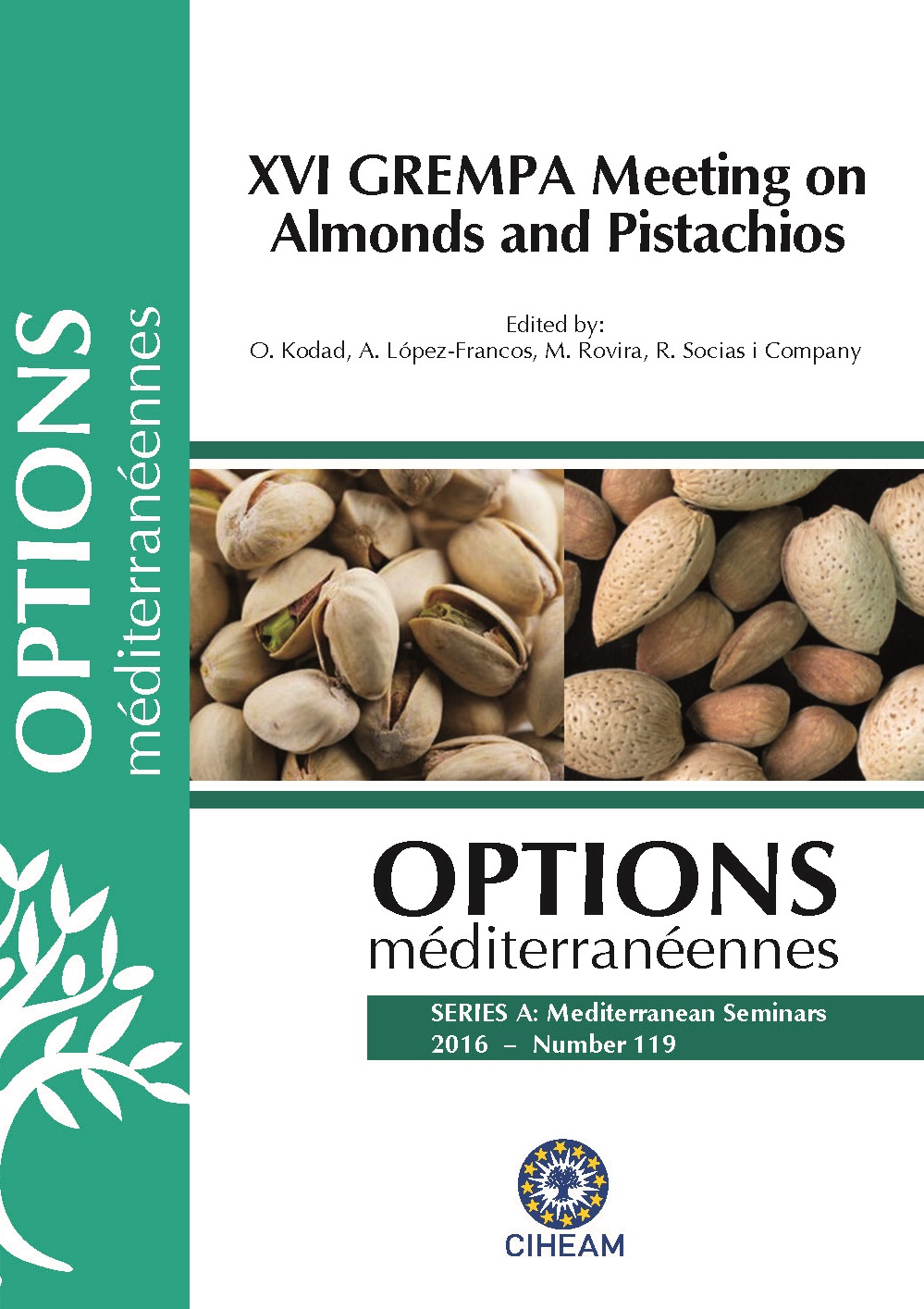| Article précédent | p. 115-118 | Article suivant |
Self-compatibility and floral morphology of almond cultivars
Self-compatibility is an important almond trait aimed in new cultivars of most breeding programs. Nevertheless, different levels of self-fertility occur in almond self-compatible cultivars. Some hypotheses have been postulated about this phenomenon, and it seems that different aspects could be involved. One of them is the position of the stigmata in relation to the anthers in the flowers. In this work the morphology of almond flowers has been studied in 27 almond self-compatible genotypes (12 cultivars and 15 advanced selections from IRTA’s almond breeding program). Data have been collected in 100 flowers/genotypes measuring the pistil and higher stamen length. According to these results, flowers were classified as “hypostigmate” (stigmata below the anthers) or “epistigmate” (stigma above the anthers). On the other hand, self-fertility percentages were studied in these self-compatible genotypes for several years, by counting the number of flowers present in bagged branches and the final fruit set obtained. No correlation was found between floral morphology and levels of self-fertility. Other aspects involved in the levels of almond self-fertility, apart from the morphology of the flower, are yet to be evaluated.
L’auto-compatibilité est un caractère important chez l’amandier, qui est ciblé chez les nouveaux cultivars pour la plupart des programmes d’amélioration. Cependant, différents niveaux d’auto-fertilité existent chez les cultivars auto-compatibles. Certaines hypothèses ont été émises concernant ce phénomène, et il semble que différents aspects puissent être impliqués. L’un d’eux est la position du stigmate par rapport aux anthères chez les fleurs. Dans ce travail, la morphologie des fleurs d’amandier a été étudiée chez 27 génotypes autocompatibles (12 cultivars et 15 sélections avancées du programme d’amélioration de l’amandier de l’IRTA). Les données ont été collectées sur 100 fleurs/génotypes en mesurant la longueur du pistil et de la partie supérieure de l’étamine. Selon les résultats, les fleurs ont été classées comme “hypostigmatique” (stigmate en dessous des anthères) ou “épistigmatique” (stigmate au-dessus des anthères). Par ailleurs, les pourcentages d’autofertilité ont été étudiés chez ces génotypes auto-compatibles sur plusieurs années, en comptant le nombre de fleurs présentes dans les branches ensachées et la mise à fruit finale obtenue. Aucune corrélation n’a été trouvée entre la morphologie florale et les niveaux d’auto-fertilité. D’autres aspects intervenant sur les niveaux d’auto-fertilité de l’amandier, outre la morphologie de la fleur, restent encore à évaluer.
- [ Afficher ]
- [ Télécharger ]
- [ Exporter la citation ]
Vous pouvez télécharger la citation au format :
- [ Imprimer ]
-
Mots-clés
PRUNUS AMYGDALUSCiter cet article
Rovira M., Miarnau X. Self-compatibility and floral morphology of almond cultivars. In : Kodad O. (ed.), López-Francos A. (ed.), Rovira M. (ed.), Socias i Company R. (ed.). XVI GREMPA Meeting on Almonds and Pistachios. Zaragoza : CIHEAM, 2016. p. 115-118. (Options Méditerranéennes : Série A. Séminaires Méditerranéens; n. 119). 16. Meeting of GREMPA (Groupe de Recherches Méditerranéennes pour l\'Amandier et Pistachier / Mediterranean Research Group for Almond and Pistachio), 2015/05/12-14, Meknes (Morocco) . http://om.ciheam.org/om/pdf/a119/00007375.pdf



